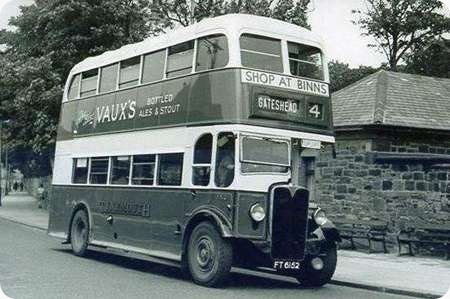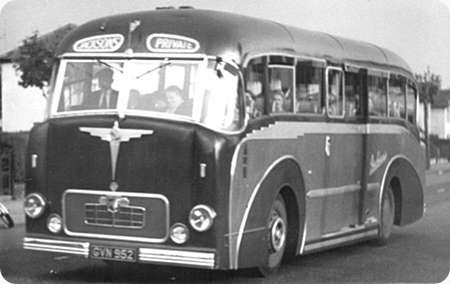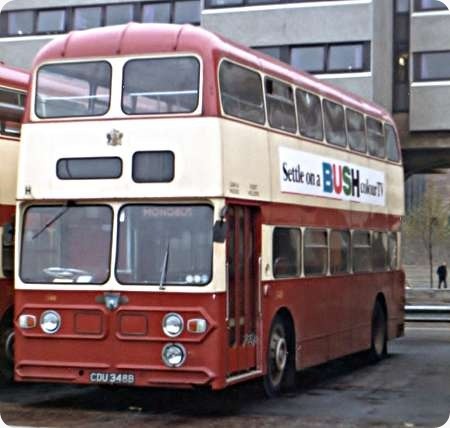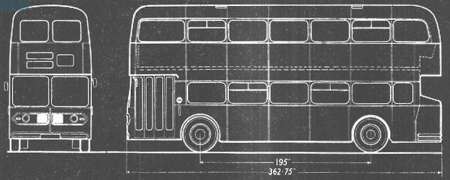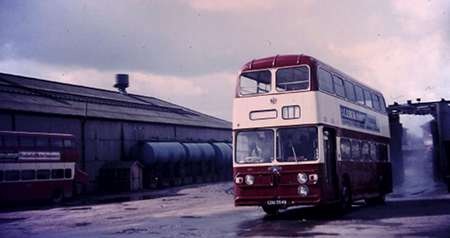Tynemouth and District – AEC Regent II – FT 6152 – 152
Tynemouth and District
1948
AEC Regent II
Weymann H30/26R
After the Intake of early 1940, no more vehicles arrived at Percy Main until 1946, in the meantime, seven vehicles were transferred to other Northern General Transport depots, eight more were requisitioned by the Ministry of War Transport. A total of 15 from a fleet of around 110 was a sizable chunk. For a while, spares availability became a problem, so it was not uncommon for vehicles awaiting parts to be cannibalised to keep others going. The first post war intake arrived in 1946 in the form of five H30/26R Northern Counties bodied 5GLW Guy Arab III’s. However, as has been mentioned before, Northern General Transport allowed its subsidiaries a degree of independence with vehicle choice and spec, so it was not long before Percy Main reverted to AEC.
Between 1947/8 they took delivery of 29, H30/26R Weymann bodied Regent II’s, which at that time amounted to roughly a quarter of the fleet. The first batch delivered in 1947 were FT 5698 to 5712 and numbered 128 to 142, the 1948 intake were FT 6143 to 6156, numbered 143 to 156. 141-142 & 156 carried the Wakefields name but were otherwise identical. The Regent II chassis had a 7.7 Litre diesel engine, four- speed sliding mesh gearbox and friction clutch, buying wasn’t complicated, it was bog standard with no other options available, so it came down to a straightforward decision of take it or leave it. Like most vehicles of the period, by today’s standards they were unrefined, but they were well built rugged and reliable, and demanded a degree of respect, anyone foolish enough to try to abuse them would generally find that the Regent was made of stern stuff. They also had one essential ingredient that modern vehicles don’t have, a conductor! As anyone who has ever worked a dual crew bus will tell you, conductors will be the first to complain if the ride is anything less than acceptable. The choice of body was a different matter with umpteen options on offer, Percy Main opted for Weymann, the build quality was top notch, and arguably one of the best looking bodies of the period. they were no strangers to it having bought similar vehicles in 1940: 152, was from the 1948 intake and is seen here in its original livery. By the time of its first repaint ‘about 1951’, the black lineout had been dropped and the fleet name was much smaller, but the gold coach lines were still in vogue. Note the flip down metal DUPLICATE plate under the overhang, apart from the later Routemasters; this was a standard fitting on all Northern General Transport group half cabs
Photograph and Copy contributed by Ronnie Hoye
28/07/14 – 07:57
It’s surprising how many Percy Main depot buses have appeared in model form. AEC Regent 135 (similar to the above photo) was issued by Corgi many years ago. They also issued Leyland Olympian 3593 from a later era. Britbus weighed in with Coastline Atlantean 3458. E.F.E. have been the most prolific with Leyland PD2 / Orion 230, AEC Renown as Tynemouth 333 and yellow Northern 3743, Atlantean / MCW yellow Northern 3194 as well as yellow Northern National 4444 and Coastline Wright Low Floor 4769. Quite an impressive representation really for one depot.
Keith Bruce
26/10/15 – 16:17
A query about this photo is the location. Looking at it, it could be Park Road, Whitley Bay. The area behind the bus was originally occupied by Whitley Park Hall. This later became a hotel, and part of the grounds became the Spanish City. The hotel closed and was demolished in the thirties. In the mid sixties, a new library was built on the site replacing the previous library which was located at the United bus station.
All this has now gone. The Spanish city has been replaced by a new school, while the library has been relocated nearer the town centre. Park Road itself has since the late sixties been a one way street in the opposite direction to which the bus is travelling.
None of this is relevant to the bus, but part of the fascination of old bus photos is seeing how much has changed – not just the buses, but the surroundings.
John Gibson
27/10/15 – 06:32
It could be Park Road, Whitley Bay, very close to the junction with Park Avenue.
Paul Robson
27/10/15 – 06:34
John, as you say, the photo was taken a long time ago, so everything may have changed. However, my guess would be that the bus is heading west along Linskill Terrace opposite the golf course, and the trees are in Northumberland Park
Ronnie Hoye
28/10/15 – 07:00
Linskill Terrace, Tynemouth, is another possibility. However the curve in the road there occurs at the north end of Washington Terrace and you would expect to see behind the bus some of the Edwardian-era houses between Washington Terrace and Park Avenue.
Paul Robson
28/10/15 – 07:01
When I first saw this photo, I was not too certain of it’s location. The photo as reproduced here has been somewhat cropped, but the bends in the road which can be seen more clearly in the original seem to match those on Park Road. There are also buildings in the distance which look to be those between Marine Avenue and the Spanish City. As Paul Robson says, it looks as if it was taken close to the junction with Park Avenue. I would agree however that it could be elsewhere and Ronnies suggestion of Linskill Terrace is certainly a possibility.
Regarding Keith Bruce’s comments about models of Tynemouth vehicles, the E.F.E. model of 230 is a nice model, but it should be a PD3, not a PD2.
John Gibson
29/10/15 – 06:35
Having looked at this again, I think we could all be wrong. It could well be Wallsend Road, at the foot of Balkwell Avenue, opposite the Pineapple Pub. The trees would then be in the grounds of St Joseph’s R.C. school. The present church was built in the late 50’s or early 60’s, which would be after this photo was taken, and the area on the bend where the stone wall is now has a low brick wall which is at the edge of the car park.
Ronnie Hoye
01/07/22 – 06:03
Definitely Park Road, almost at Park Avenue junction. The park is Whitley Park, and the parkkeeper’s house is behind the stone wall – his son was a friend of my brother. The distant bend is indeed the Spanish City funfair location.Service 4 Gateshead was renumbered Service 1 Gateshead Lobley Hill Moorfoot subsequently.
Conrad Smith
